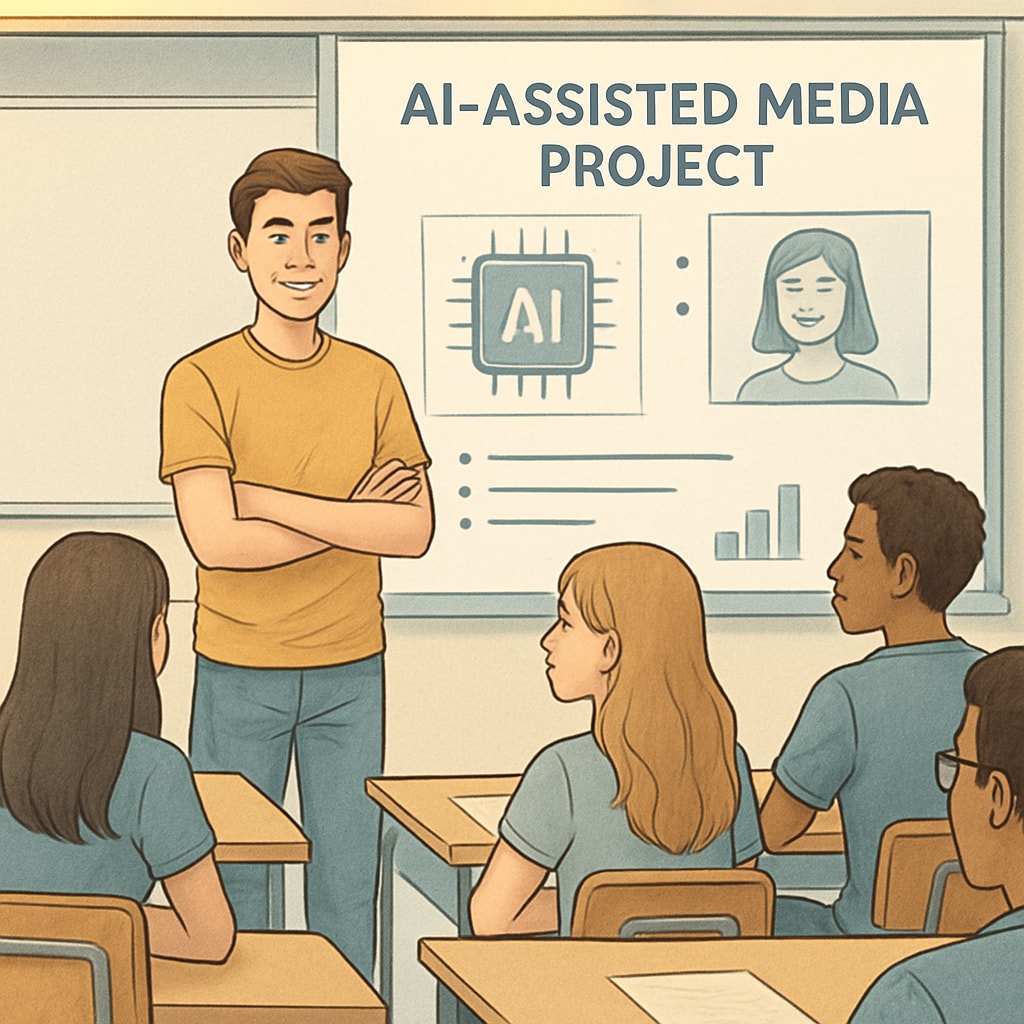In the digital age, fostering critical thinking about media is more important than ever. By integrating AI writing prompts, media literacy, and teaching resources, educators can empower high school students (grades 9–12) to better understand, analyze, and create media content. These tools not only enhance English, media studies, and creative writing skills but also prepare students to navigate the complexities of modern media landscapes responsibly. Below, we’ll explore five free AI-powered writing prompts designed specifically for this purpose.
Why Integrate AI Tools in Media Literacy Education?
Artificial intelligence has revolutionized content creation, offering unique opportunities in education. For example, AI tools can generate prompts, assist with brainstorming, and provide feedback, freeing up educators to focus on fostering deep discussions. Incorporating these tools encourages students to approach media critically, uncover biases, and even produce creative projects like short films or blogs.

5 Free AI Writing Prompts to Enhance Media Literacy
Here are five practical AI prompts that educators can use to promote media literacy:
- Analyze Media Bias: Use AI to generate a comparison of two news articles about the same event. Students can identify biases and discuss how language impacts perception.
- Film Review Writing: Ask AI to provide a structured guide for reviewing a film, including sections like cinematography, storytelling, and audience impact.
- Create an Advertisement: Challenge students to design a persuasive ad using AI tools, then analyze its ethical implications and effectiveness.
- Debunking Misinformation: Use AI to generate a fake social media post with misleading information. Students research and write a rebuttal based on credible sources.
- Exploring Representation in Media: Ask AI to suggest questions about diversity in popular films or TV shows, encouraging students to write essays or scripts exploring these themes.
Each of these activities encourages critical thinking, creativity, and ethical considerations, all vital components of media literacy education.

Benefits of AI-Powered Media Literacy Resources
Integrating AI tools into media literacy education offers several advantages:
- Accessibility: Free AI tools make advanced media analysis accessible to schools with limited resources.
- Engagement: Interactive tasks like creating advertisements or debunking posts keep students actively involved.
- Skill Development: Students enhance their writing, analytical, and creative skills while learning to use AI responsibly.
- Future Readiness: Exposure to AI tools prepares students for careers in media, tech, and beyond.
How to Integrate These Prompts in Class
Educators can seamlessly incorporate these prompts into their lesson plans. For example:
- Pair prompts with class discussions to explore broader topics like ethics in AI or the impact of media representations.
- Encourage group projects where students collaborate on AI-assisted tasks, fostering teamwork and diverse perspectives.
- Use prompts as part of homework assignments or assessments to measure understanding of media literacy concepts.
By adapting these activities to suit different learning styles, teachers can ensure every student benefits from the experience.
Conclusion: Empowering Students Through AI and Media Literacy
Incorporating AI writing prompts, media literacy, and teaching resources into high school curricula equips students with essential skills for the digital world. By fostering critical thinking, creativity, and ethical awareness, educators can prepare students to engage with media responsibly and effectively. Explore these free prompts today and unlock new opportunities for your classroom!
Learn more about media literacy on Wikipedia and its importance on Britannica.


